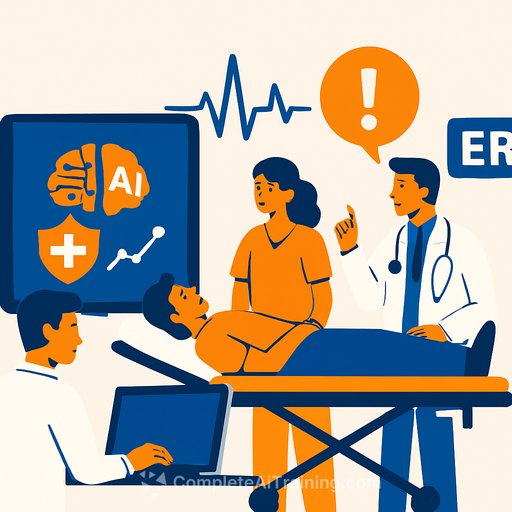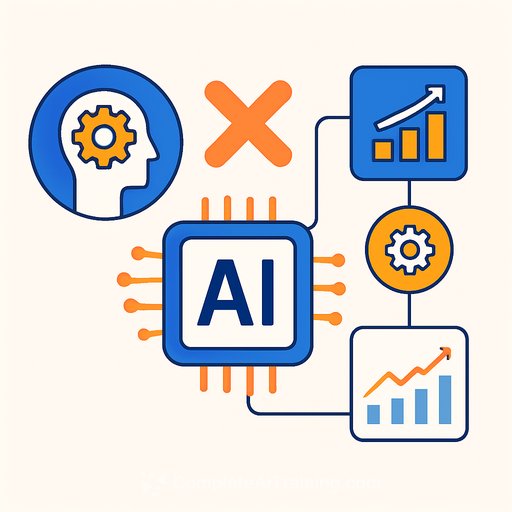AI-Based Emergency Triage Model Enhances Prediction of Critical Outcomes in the ED
Emergency department (ED) overcrowding delays patient care and worsens clinical outcomes. Traditional triage systems, like the Canadian Triage and Acuity Scale (CTAS), often struggle with accuracy and consistency. A new AI-driven approach shows promise by more precisely predicting which patients will require intensive care unit (ICU) admission, enabling better resource allocation and quicker decision-making.
Why Triage Improvement Matters
ED overcrowding is a widespread problem that leads to longer wait times, delayed treatments, and higher mortality rates—especially in resource-limited settings. Standard triage methods rely heavily on clinical judgment, which can vary significantly and sometimes result in under-triage or over-triage. Under-triage delays urgent care for critically ill patients, while over-triage burdens limited resources.
Improving triage accuracy is essential for timely care and efficient use of resources. This task is ideal for machine learning models that can analyze large datasets and identify patterns beyond human intuition.
Developing the AI Model
This study analyzed over 160,000 adult ED visits from 2018 to 2022 at a tertiary hospital. The goal was to predict ICU admissions using only data available at triage. Inputs included structured data like vital signs and arrival mode, plus unstructured free-text chief complaints written in Thai with some English abbreviations.
- Free-text complaints were transformed using multilingual sentence embeddings, which convert text into high-dimensional numeric vectors.
- Dimensionality reduction via Principal Component Analysis (PCA) distilled these embeddings into key components while preserving most information.
- Three machine learning algorithms—logistic regression, random forest, and XGBoost—were trained and compared against CTAS.
Data imputation handled missing values with K-nearest neighbors for continuous variables and mode imputation for categorical data. The dataset was split into training (80%) and test (20%) sets to validate model performance.
Model Performance and Key Findings
The XGBoost model outperformed both the traditional CTAS system and other machine learning models. It achieved an AUROC of 0.917 versus 0.882 for CTAS, indicating stronger overall discrimination. More importantly, the area under the precision-recall curve (AUPRC) was nearly doubled (0.629 vs. 0.333), which is critical when predicting rare events like ICU admission.
Interpretability analysis using SHapley Additive exPlanations (SHAP) showed that the most influential predictors included:
- Mode of arrival (e.g., EMS or walk-in)
- Patient age
- Vital signs such as heart rate and oxygen saturation
- Chief complaint text embeddings capturing nuanced clinical information
Implications for Healthcare IT and Development
Integrating machine learning models that combine structured EHR data with unstructured free-text inputs can significantly improve triage accuracy. For IT teams in healthcare, this means:
- Leveraging NLP techniques like multilingual sentence embeddings to extract meaningful features from clinical notes.
- Implementing scalable model training pipelines with robust imputation and dimensionality reduction strategies.
- Applying explainability tools (e.g., SHAP) to ensure transparency and trust in AI-driven decisions.
- Designing real-time decision support systems to assist emergency staff without disrupting workflow.
Such solutions can reduce variability in triage decisions and help prioritize care for critically ill patients faster and more reliably.
Limitations to Consider
- The model’s outcome focused on direct ICU admissions from the ED, which may miss cases of delayed ICU transfers.
- Data was collected from a single center with a predominantly Asian population, so external validation is necessary before wider deployment.
- Free-text chief complaints can vary in phrasing and completeness, introducing noise.
- Patient history beyond triage data was not included, which could improve predictions if integrated.
Conclusion
Machine learning models that combine structured clinical data with unstructured text embeddings can significantly outperform traditional triage scales in predicting ICU admissions. This approach supports faster, more accurate identification of patients needing critical care, especially in high-volume, resource-limited emergency departments.
For developers and IT professionals working in healthcare, this study highlights the value of NLP and advanced machine learning techniques applied to electronic health records for impactful clinical decision support.
To explore practical AI applications in healthcare and beyond, consider visiting Complete AI Training for curated courses and resources.
Your membership also unlocks:






